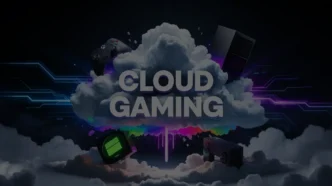Imagine playing your favorite games without needing a fancy console or a pricey gaming PC. With cloud gaming, all you need is a solid internet connection! It’s like magic: you can jump into massive worlds, team up with friends, or battle rivals instantly—no downloads, no hardware headaches. This isn’t just convenient; it’s breaking down walls.
This revolution not only offers convenience but also fosters a more inclusive gaming community, allowing gamers from all walks of life to connect and compete in real-time. As industry leaders invest heavily in developing sophisticated cloud platforms, the potential for innovative gameplay, enhanced graphics, and cross-platform accessibility is limitless.
Buckle up as we explore how cloud gaming is reshaping the industry, redefining player expectations, and paving the way for the future of entertainment. Prepare to level up in an era where gaming is no longer confined to hardware, but exists in a boundless digital realm.
Table of Contents
What is Cloud Gaming?
Cloud gaming, often referred to as gaming-as-a-service, represents a paradigm shift in the way video games are played. Instead of relying on traditional physical media or downloaded software, cloud gaming leverages powerful remote servers to stream games directly to a player’s device.
This technology enables users to play high-quality games without the need for expensive hardware, transforming how games are distributed and consumed. The essence of cloud gaming is similar to streaming video services like Netflix or Hulu, but instead of passive content, it delivers interactive gaming experiences.
At its core, gaming cloud operates by hosting the game on a server in a data center. When a player inputs commands through their controller or keyboard, these commands are sent to the server, which processes them in real-time and streams the updated visuals back to the player. This process happens almost instantaneously, provided there is a stable and fast internet connection.
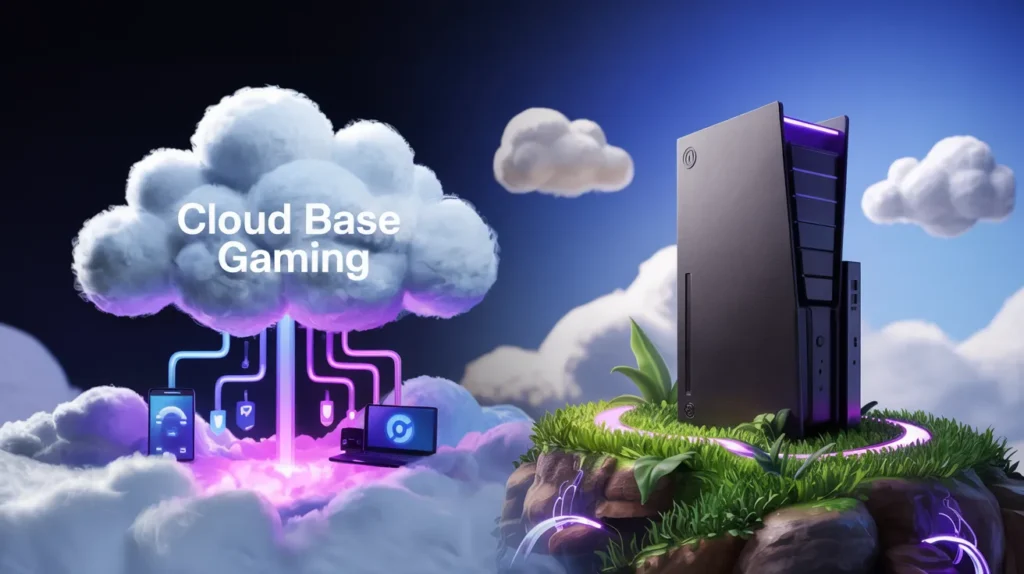
This means that the actual heavy lifting – the rendering of complex graphics and physics calculations – happens on the server side, freeing the player’s device from these demanding tasks.
The appeal of gaming cloud lies in its accessibility and convenience. Players no longer need to worry about hardware upgrades or compatibility issues. As long as they have a device capable of streaming video and an internet connection, they can access a vast library of games.
This democratization of gaming technology opens up new possibilities for players worldwide, regardless of their financial means or technical expertise.
How Does Cloud Gaming Work?
The technology behind gaming cloud is both fascinating and complex. It involves a seamless integration of server infrastructure, network connectivity, and sophisticated software to deliver a smooth gaming experience. At the heart of this system are powerful data centers equipped with high-performance servers that run the games. These servers handle all the processing, including graphics rendering, physics calculations, and game logic.
When a player initiates a game session, their device sends a request to the gaming cloud service. The server then starts running the game and streams the video output back to the player’s device. This video stream is compressed to reduce bandwidth usage and latency. Compression is crucial because it ensures that the stream can be delivered quickly and with minimal delay. On the player’s end, the device decompresses the video stream and displays it on the screen.

One of the most critical aspects of gaming cloud is latency – the delay between a player’s input and the server’s response. Low latency is essential for a responsive and enjoyable gaming experience. Cloud gaming services use various techniques to minimize latency, such as deploying servers in multiple geographic locations to reduce the distance data has to travel. They also employ advanced networking technologies and protocols to ensure that data is transmitted as quickly and efficiently as possible.
Benefits of Cloud Gaming
The advantages of cloud gaming are numerous, making it an attractive option for both casual and hardcore gamers. One of the most significant benefits is the elimination of the need for expensive gaming hardware. Players no longer need to invest in high-end gaming consoles or powerful PCs to enjoy the latest titles. This can result in substantial cost savings, especially considering the rapid pace at which hardware becomes obsolete.
Also offers unparalleled convenience. Games can be accessed instantly without the need for lengthy downloads or installations. This means that players can switch between different games quickly and easily, making it easier to discover new titles and genres. Additionally, since the games are hosted on remote servers, players can access their game libraries from multiple devices, including smartphones, tablets, and smart TVs, providing a truly flexible gaming experience.
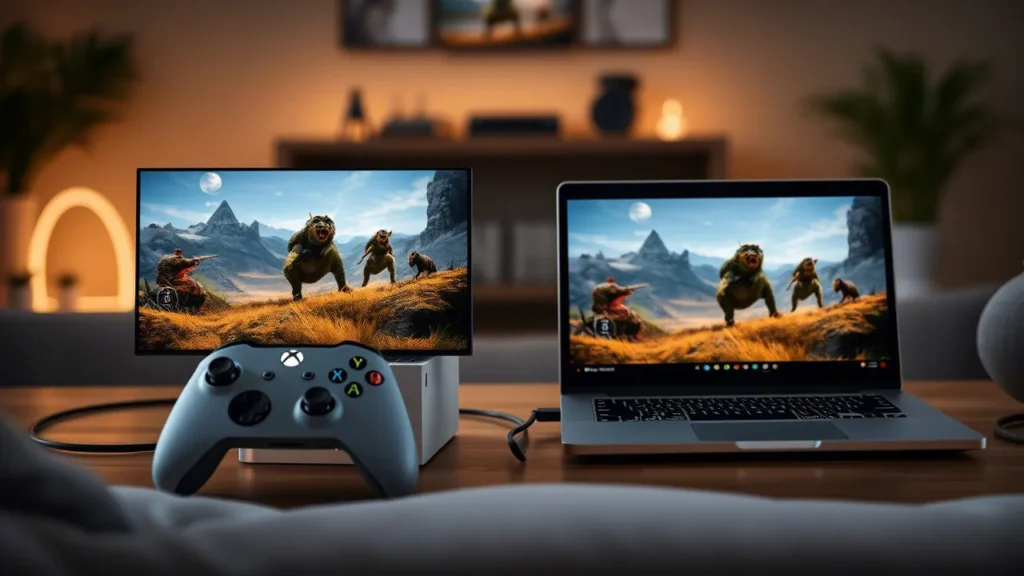
Another significant benefit is the potential for cross-platform play. Services can enable players on different devices to play together seamlessly. This breaks down barriers between different gaming communities and fosters a more inclusive and interconnected gaming ecosystem. Furthermore, gaming cloud can offer enhanced security and anti-cheat measures, as the server-side architecture makes it more challenging for malicious players to exploit the system.
Google Stadia vs Microsoft xCloud
Two of the most prominent players in the gaming cloud space are Google Stadia and Microsoft xCloud. Both services aim to deliver high-quality gaming experiences through the cloud, but they take different approaches and have unique features that set them apart.
While Google Stadia made waves as one of the first major services, it officially shut down in January 2023. But don’t worry—cloud gaming is still thriving, and Microsoft’s xCloud (now part of Xbox Game Pass Ultimate) is leading the charge. With xCloud, you get instant access to hundreds of Xbox games on your phone, tablet, or laptop. Love playing on your Xbox console? Pick up right where you left off when you’re away from home. The best part? No fancy hardware is needed—just a stable internet connection.
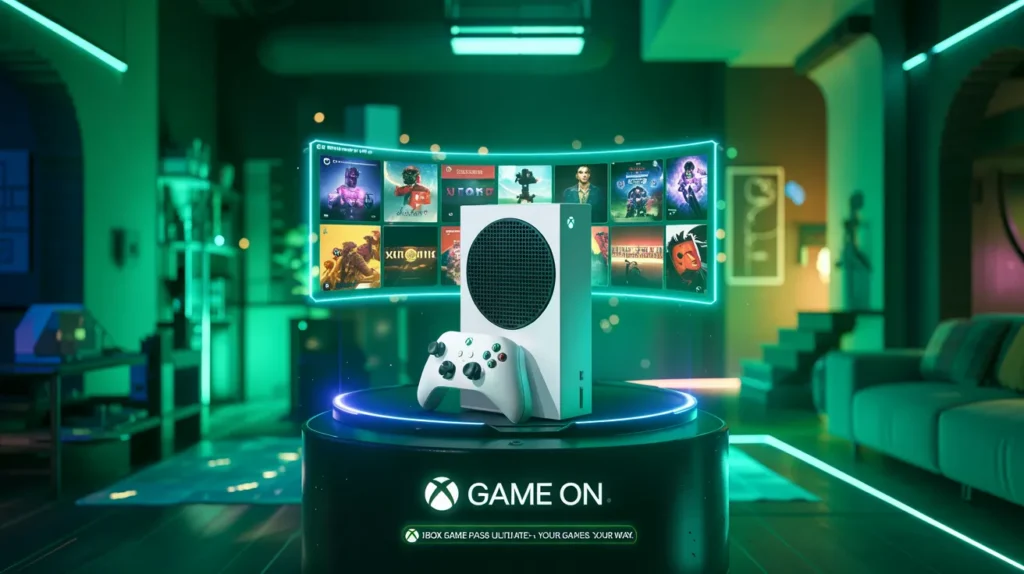
Microsoft xCloud, part of the Xbox Game Pass Ultimate subscription, leverages Microsoft’s extensive Azure cloud infrastructure to deliver its service. xCloud offers access to a vast library of Xbox games that can be streamed to various devices, including smartphones and tablets. One of xCloud’s significant advantages is its integration with the Xbox ecosystem, allowing players to seamlessly switch between local console play and cloud streaming. This flexibility makes it an attractive option for existing Xbox users looking to expand their gaming options.
Stadia’s closure taught us a lot about what gamers want: flexibility, a huge game library, and fair pricing. xCloud nails this by bundling with Xbox Game Pass’ massive catalog (think Starfield, Halo, and indie gems). Plus, Microsoft keeps improving streaming quality, so you get smoother gameplay and fewer hiccups. While Stadia’s gone, its legacy lives on, proving that gaming cloud isn’t just a fad—it’s the future.
P.S. Other services like NVIDIA GeForce NOW and PlayStation Plus Premium are also worth checking out if you’re exploring cloud gaming!
The Future of Cloud Gaming
The future of cloud gaming looks incredibly promising, with many industry experts predicting that it will become the dominant form of gaming in the coming years. As technology continues to advance, the quality and accessibility of gaming cloud are expected to improve significantly. One of the key areas of development is the reduction of latency, which will be crucial for providing a seamless and immersive gaming experience.
Another exciting aspect of the future of gaming cloud is the potential for more immersive and interactive experiences. With the power of cloud computing, developers can create more complex and detailed game worlds that would be impossible to run on traditional hardware. This could lead to new genres of games and innovative gameplay mechanics that push the boundaries of what is currently possible.
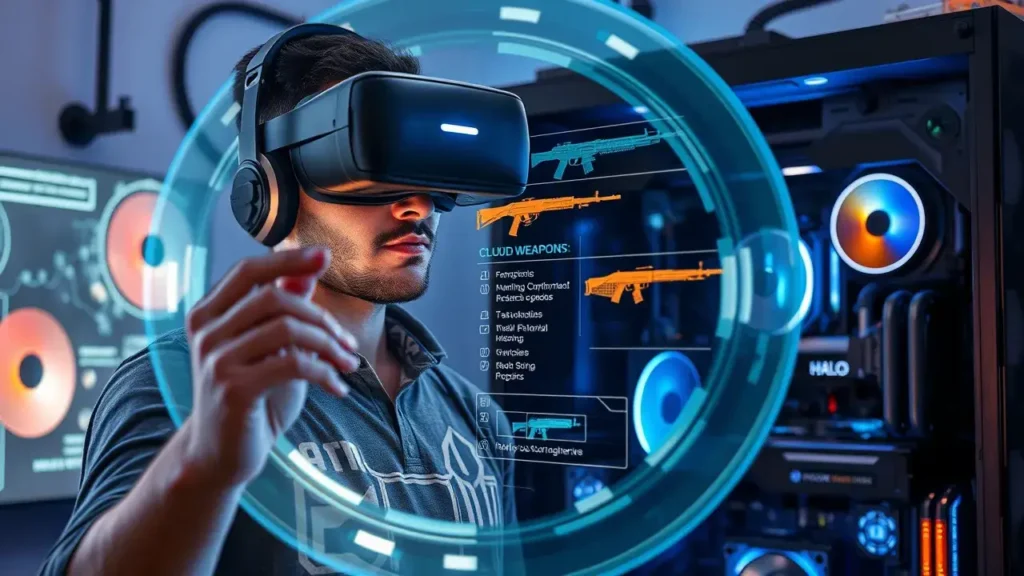
Additionally, the rise of virtual and augmented reality could be closely tied to the growth of cloud gaming. The processing power required for high-quality VR and AR experiences is immense, and gaming cloud could provide the necessary infrastructure to deliver these experiences to a broader audience. This could lead to a new era of gaming where players are fully immersed in virtual worlds that are more realistic and interactive than ever before.
Overall, the future of cloud gaming is bright, with endless possibilities for innovation and growth. As technology continues to advance, players can look forward to a new era of gaming that is more accessible, immersive, and interconnected than ever before.
Cloud Gaming and 5G Networks
The advent of 5G networks is set to revolutionize the cloud gaming industry by significantly enhancing the quality and responsiveness of game streaming. 5G technology promises much faster data transfer speeds, reduced latency, and increased network capacity compared to its predecessors. These improvements are crucial for gaming cloud, where a stable and fast internet connection is paramount for a seamless experience.
One of the most significant benefits of 5G for cloud gaming is the reduction in latency. Lower latency means that the delay between a player’s input and the server’s response is minimized, resulting in a more responsive and enjoyable gaming experience. This is particularly important for fast-paced, competitive games where split-second decisions can make all the difference. With 5G, players can expect near-instantaneous reactions, making cloud gaming more viable for a wider range of game genres.
In addition to reducing latency, 5G networks will also enable higher quality game streams with better graphics and resolution. The increased bandwidth provided by 5G means that cloud gaming services can deliver 4K and even 8K streams without compromising on quality. This will make cloud gaming more appealing to players who demand the highest visual fidelity from their games.
Furthermore, 5G will expand the accessibility of gaming cloud by providing fast and reliable internet connections in areas that previously lacked adequate infrastructure. This will allow more players to enjoy the benefits of cloud gaming, regardless of their location. As 5G networks continue to roll out globally, the impact on the gaming cloud industry will be profound, paving the way for a new era of gaming.
The Impact of Cloud Gaming on Console Sales
The rise of cloud gaming has sparked significant debate about the future of traditional gaming consoles. While some industry experts believe that cloud gaming could eventually render consoles obsolete, others argue that there will always be a market for dedicated gaming hardware. The impact of cloud gaming on console sales is likely to be multifaceted, with both positive and negative implications for the industry.

On one hand, cloud gaming has the potential to reduce the demand for high-end gaming consoles. As cloud gaming services become more accessible and offer a comparable experience to traditional consoles, players may be less inclined to invest in expensive hardware. This could lead to a decline in console sales, particularly among casual gamers who are more price-sensitive and less concerned with owning the latest technology.
However, cloud gaming could also complement the console market by offering additional flexibility and convenience. Many console manufacturers, such as Microsoft with its xCloud service, are integrating cloud gaming into their ecosystems. This allows players to enjoy the best of both worlds – the high-quality, local gaming experience provided by consoles, and the convenience of cloud gaming for on-the-go play. This hybrid approach could drive continued demand for consoles while expanding the overall gaming market.
Ultimately, the impact of cloud gaming on console sales will depend on various factors, including the quality of cloud gaming services, the pricing of consoles, and consumer preferences. While cloud gaming may pose a challenge to traditional consoles, it also presents new opportunities for growth and innovation in the gaming industry.
Cloud Gaming and Esports
Esports, the competitive world of professional video gaming, is another area that stands to benefit significantly from the rise of cloud gaming. The accessibility and flexibility offered by cloud gaming can help to democratize esports, making it easier for players from diverse backgrounds to participate and compete at a high level.
One of the key advantages of cloud gaming for esports is the ability to play on a level playing field. Since the games are run on powerful remote servers, all players have access to the same hardware and performance, eliminating disparities caused by differences in personal equipment. This can create a more fair and competitive environment, where skill and strategy are the primary determinants of success.

Cloud gaming can also facilitate the organization and broadcasting of esports events. With games hosted in the cloud, tournament organizers can more easily manage logistics, such as setting up matches, monitoring player performance, and ensuring the integrity of the competition. Additionally, cloud gaming services can integrate with streaming platforms, making it easier for fans to watch and engage with live events.
Furthermore, the global reach of cloud gaming can help to expand the audience for esports. Players and fans from regions with limited access to traditional gaming hardware can now participate and follow the action through cloud gaming platforms. This can lead to increased viewership, sponsorship opportunities, and overall growth for the esports industry.
In conclusion, cloud gaming has the potential to transform esports by making it more accessible, equitable, and scalable. As the technology continues to evolve, it will likely play an increasingly important role in the future of competitive gaming.
Future Trends in Cloud Gaming
As cloud gaming continues to gain traction, several emerging trends are set to shape the industry’s future. These trends will not only enhance the gaming experience but also redefine how games are developed, distributed, and consumed.
One of the most significant trends is the integration of artificial intelligence (AI) and machine learning into cloud gaming platforms. AI can be used to optimize game streaming, reduce latency, and enhance in-game experiences.
For example, machine learning algorithms can predict and pre-render game scenes based on player behavior, resulting in smoother gameplay. Additionally, AI-driven analytics can provide valuable insights into player preferences, enabling developers to create more engaging and personalized content.

Another trend to watch is the rise of social and collaborative gaming experiences. Cloud gaming platforms can facilitate new forms of multiplayer interactions, such as large-scale, persistent game worlds where players can collaborate and compete in real-time. These shared experiences can foster a sense of community and create more dynamic and immersive gameplay. Furthermore, cloud gaming can enable innovative features like spectator modes, where players can watch and interact with live games, blurring the lines between playing and viewing.
The convergence of cloud gaming with other emerging technologies, such as virtual reality (VR) and augmented reality (AR), is also poised to revolutionize the industry. Cloud-based VR and AR experiences can offer unparalleled immersion and interactivity, allowing players to step into virtual worlds with a level of detail and realism that was previously unattainable. As these technologies mature, they will open up new possibilities for game design and storytelling.
In summary, the future of cloud gaming is bright, with numerous exciting trends on the horizon. The integration of AI, the rise of social and collaborative experiences, and the convergence with VR and AR are just a few of the developments that will shape the industry’s evolution. As these trends unfold, players can look forward to a new era of gaming that is more immersive, interactive, and inclusive than ever before.
Conclusion: The Future of Gaming is in the Cloud
The rise of cloud gaming marks a pivotal moment in the evolution of the gaming industry. By leveraging the power of cloud computing, this revolutionary technology is breaking down barriers to entry, making high-quality gaming experiences accessible to a broader audience. With just a stable internet connection, players can enjoy a vast library of games on a variety of devices, from smartphones to smart TVs, without the need for expensive hardware.
Cloud gaming offers numerous benefits, including cost savings, convenience, and the potential for cross-platform play. Services like Google Stadia and Microsoft xCloud are leading the charge, pushing the boundaries of what is possible and driving innovation in the industry. The advent of 5G networks will further enhance the quality and responsiveness of cloud gaming, paving the way for a new era of immersive and interactive experiences.

The impact of cloud gaming extends beyond individual players, influencing the future of traditional gaming consoles, esports, and game development. As technology continues to advance, the possibilities for cloud gaming are limitless, promising a future where gaming is more inclusive, interconnected, and dynamic than ever before.
In conclusion, the future of gaming is in the cloud. As we move forward, cloud gaming will play an increasingly important role in shaping the industry, redefining player expectations, and paving the way for the next generation of entertainment. The gaming landscape is set to evolve in exciting and unexpected ways, and cloud gaming is at the forefront of this transformation. Prepare to level up in a digital realm where the possibilities are boundless.
P.S. Most services like xCloud offer free trials—dive in risk-free!
What is cloud gaming, and how does it work?
Cloud gaming lets you play high-quality video games over the internet without needing a powerful console or PC. Instead of running the game on your device, it streams the game from remote servers, like watching a live video. Your inputs (button presses) are sent to the server, which processes them and sends back the updated gameplay instantly.
Why is cloud gaming considered the future?
Cloud gaming removes the need for expensive hardware upgrades, making games accessible on phones, tablets, or TVs with just a good internet connection. It also allows instant access to games without downloads, supports cross-platform play, and uses advanced tech like 5G to reduce delays, making it faster and more convenient.
Will cloud gaming replace traditional consoles like PlayStation or Xbox?
Not entirely. While cloud gaming reduces reliance on consoles, many services (like Xbox Cloud Gaming) work with consoles, letting you play games on the go. Consoles may evolve to focus on hybrid experiences, blending local and cloud gaming, rather than disappearing completely.
How does 5G improve cloud gaming?
5G networks offer super-fast speeds and lower latency (delay), which means smoother gameplay and higher-quality graphics. This makes cloud gaming feel more responsive, even for fast-paced games like racing or fighting titles, and allows more players to join without lag.
Is cloud gaming affordable for most people?
Yes! Instead of buying pricey consoles or PCs, you pay a monthly subscription (like Netflix for games). Services like Xbox Game Pass Ultimate or GeForce NOW let you play hundreds of games for a low cost, saving money on hardware and physical copies.

